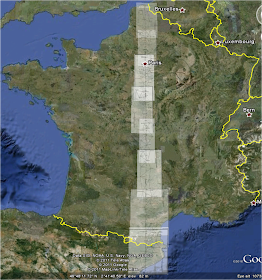This post is a response to one of the points Rebekah Higgit makes over at “Whewell’s Ghost” on “Dos and Don’ts of history of science”. It’s all about scientists:
1) Do not ever call anyone a scientist who would not have recognised the term. The word was not coined until the 1830s (by William Whewell himself) but a) he meant something rather different by it and b) the word was not actually used until the 1870s. If we use the term to describe anyone before this date we risk loading their views, status, career, ambitions and work with associations that just do not exist before this date.I may know what I mean if it slips out in my description of an 18th-century astronomy, but the person listening to me will hear all sorts of other things. It too easily glides over points such as the fact that individuals probably did something else to make their living, or were personally wealthy. Science was not a career, or a vocation. I could give many further examples, and expand this rule into to using actors’ categories elsewhere, but this is the fundamental point. Not only did the word not, essentially, exist pre-1870 but there was no equivalent and no such idea. Awkward as it can sometimes be, man of science, natural philosopher, mathematician, astronomer, physician, naturalist or whatever should always be used instead.
I disagree with this. I should point out that I don’t consider this a Marmite* argument: the point Rebekah makes is not unreasonable and arguing serves to reinforce the point she is making. That the lives of “scientists” in the past were very different from the lives of most modern “scientists” is an entirely fair point, and is perhaps what the history of science is all about.
Since Rebekah is a professional historian of science, I feel my best approach is to argue this point on linguistic and scientific grounds, since I am a scientist not a historian. The OED says a scientist is:
- A person with expert knowledge of a science; a person using scientific methods.
it goes on to describe its coining via almost joking discussions over the British Association for the Advancement of Science in 1834 to Whewell’s use in 1840.
Precluding the use of the word “scientist” from application to people living before it was introduced seems to rather limit our options – how far must this sanitisation of language extend? Our use of words evolves in time. There are parallels here with Maxwell’s equations: in the mathematical language of his time his equations were clumsy and verbose, in more modern notation they are much more compact (and to overuse a word “elegant”). Working scientists don’t use Maxwell’s original notation, they use the modern notation because it captures the essential elements of the original work but is easier to use.
In my view the heart of the issue is the way in which we define scientists, to me being a scientist is defined operationally: by what I do in applying the scientific method, and by inference what people did in the past. Rather than socially or economically: what I have been trained to do or what people would pay me to do. I would still be a scientist if I were not paid for it, and hadn’t been trained. In both cases I might be poorer, but in different senses of the word!
There is also a point about communication here too: using a word for which you and your colleagues hold a specialist, narrow meaning may be “correct” but not help with communication. Knowing that your definition and the definition your audience hold is different is important but does not mean you should hold your definition sacrosanct – I face the same issue communicating my specialist area of science.
Perhaps the issue here is that Rebekah takes scientist to mean “modern professional scientist” whilst my definition is more catholic.
This does lead to the question: should I describe myself as a historian?
*Appropriate here since I work for the company that makes Marmite.



